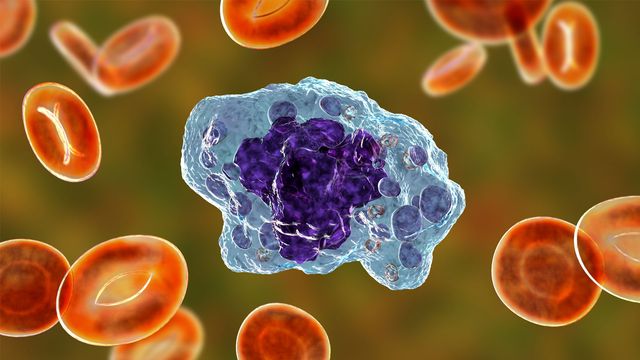Breastfeeding until at least six months helps babies to fight off infections and reduces chronic inflammation, according to a new study. And better understanding the way specific nutrients in breast milk impact the immune system…
Category: 6. Health
-

Macrophages Prevent Type 1 Diabetes by Silencing T Cells
Approximately 9.5 million people globally live with Type 1 diabetes, a chronic autoimmune disease where T cells from the body’s immune system destroy insulin-producing cells in the pancreas, which are needed to control blood-sugar levels….
Continue Reading
-
Cannabis Use Increasing in People With Psychosis – MedPage Today
- Cannabis Use Increasing in People With Psychosis MedPage Today
- Differential effect of cannabis use and antipsychotic medication on extracellular free-water in the brain of individuals with early psychosis and controls Nature
- More people with…
Continue Reading
-

New Parkinson’s disease study suggests therapeutic interventions might protect against formation of toxic alpha-synuclein protein – School of Medicine News
Scientists at the Wayne State University School of Medicine have published research into Parkinson’s disease that could serve as a road map for exploring therapies to slow the progression of, or even prevent,…
Continue Reading
-
The best — and worst — foods for your gut microbiome
Every time you eat a meal, you’re hosting a dinner party. Your guests are the trillions of microbes that live in your gut.
These hungry microbes, collectively known as your gut microbiome, directly affect your long-term health for better or for…
Continue Reading
-
Mayo Clinic researchers discover ‘traffic controller’ protein that protects DNA, and may help kill cancer cells
ROCHESTER, Minn. — Mayo Clinic researchers have identified a protein that acts like a traffic controller for DNA, preventing damage during cell division — a discovery that could lead to new cancer therapies,…
Continue Reading
-

Researchers warn of rare, dangerous type of breast cancer on the rise
A rare but dangerous form of breast cancer is on the rise in the United States, a new report says.
Lobular breast cancer rates are rising three times as fast as all other breast cancers combined, 2.8% per year versus .8% per year, researchers…
Continue Reading
-
Just a moment…
Just a moment… This request seems a bit unusual, so we need to confirm that you’re human. Please press and hold the button until it turns completely green. Thank you for your cooperation!
Continue Reading
-

Largest study of African American brain tissue reveals key Alzheimer gene activity
The prevalence of Alzheimer disease (AD) is approximately two times higher in African Americans (AA) compared to White/European-ancestry (EA) individuals living in the U.S. Some of this is due to social determinants of health such…
Continue Reading
-

Ireland launches next phase of national precision oncology program
Today (8th October), Ireland’s Minister for Further and Higher Education, Research, Innovation and Science, James Lawless TD, launched Phase 2 of the country’s leading and largest ever cancer research program, Precision Oncology…
Continue Reading
